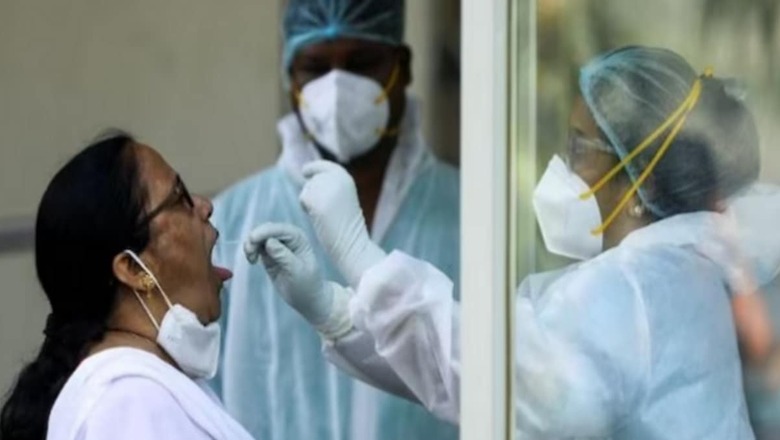
views
India reported a surge in Covid cases with 614 fresh infections detected in the last 24 hours which included cases of the new COVID-19 sub-variant JN.1. As per the latest updated data of the Union Health Ministry on Wednesday, active cases have increased to 2,311.
Earlier in the day, NITI Aayog member (Health) Dr V K Paul that as many as 21 cases of COVID-19 sub-variant JN.1 have been detected across the country till now. Out of these, 18 were traced in Goa and one each was found in Kerala and Maharashtra.
Covid -19 Subvariant JN.1.
Scientists in South Africa detected the new COVID-19 variant with a large number of mutations last month, blaming it for a surge in infection numbers.
The JN.1 sub-variant, a descendant of the Pirola variant (BA.2.86), was first identified in Luxembourg and has since spread to several countries.
This variant has only one change to its spike protein compared with its ancestor, but that seems to have been enough to make it a fitter and faster virus, CNN reported.
The World Health Organization (WHO) on Tuesday classified the JN.1 strain of coronavirus as a “variant of interest”. According to a Reuters report, the global health body said, “Based on the available evidence, the additional global public health risk posed by JN.1 is currently evaluated as low.”
Symptoms of JN.1 sub-variant
- Fever
- Runny nose
- Sore throat
- Headache
- Abdominal pain and diarrhoea
Experts have also warned to look out for ‘breathlessness’, a sign associated with the variant for the elderly and persons who are immunocompromised.
Covid-19 Variants Detected in India and The World
Delta
Delta variant (B.1.617.2) was first identified in India. It spreads more easily than other variants and may cause more severe cases than the other variants. Delta variant caused the second and the most deadly COVID-19 wave in early 2021 as most of the population was unvaccinated.
Delta Plus
A mutation of the Delta variant, this variant is detected in dozens of countries. Most of the cases have occurred in the U.K. but even there, it’s only present in about 6% of the cases. In the US, it was found in less than 1% of cases.
Alpha
Found in late 2020, the Alpha (B.1.1.7) variant is mutated on the spike protein, which helps the virus infect its host. According to experts, gene mutations were first found in COVID-19 cases seen in people in southeastern England. This variant has since been reported in various countries. US scientists estimate that these mutations could make the virus up to 70% more transmissible, meaning it could spread more easily.
Beta
This variant, found in other countries including South Africa and Nigeria, appears to spread more easily than the original virus but doesn’t seem to cause worse illness.
Gamma
The Gamma variant ( (P.1)) was first detected in January 2021 by experts in people from Brazil who had travelled to Japan. It appeared to be more contagious than earlier strains of the virus
Lambda
The Lambda (C.37) variant was primarily detected in South American countries, including Peru, Ecuador, Argentina and Brazil. According to WHO, lambda has been associated with ‘substantive rates of community transmission in multiple countries, with rising prevalence over time concurrent with increased COVID-19 incidence’.
B.1.1.529
The new variant found in South Africa has not been named by the WHO yet. It goes by the scientific label B.1.1.529 and has been named as ‘variant of concern’ by virologist Tulio de Oliveira, who said, “the variant has a very high number of mutations.”
Omicron
The Omicron variant of Covid-19 had caught the world’s attention at the beginning of 2022. In February 2022, the WHO had declared it a variant of concern. According to WHO’s website, Omicron spreads significantly faster than the Delta variant in countries with documented community transmission, with a doubling time of 2-3 days.
JN.1
JN.1 sub-variant is a descendant of the Pirola variant (BA.2.86). As many as 21 cases of JN.1 sub-variant have been detected in India. The first case of JN.1 was identified in a positive RT-PCR sample in Karakulam of Thiruvananthapuram on December 8, 2023. The second case was found in a 41-year-old male from Maharashtra’s Sindhudurg.




















Comments
0 comment